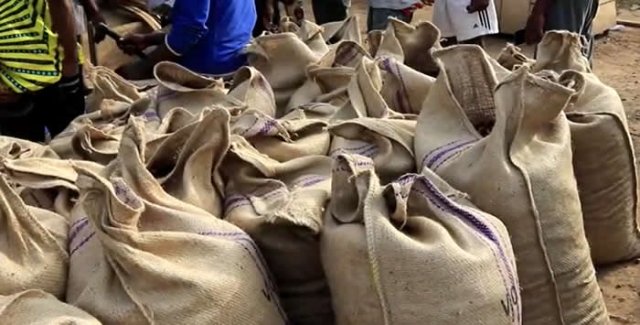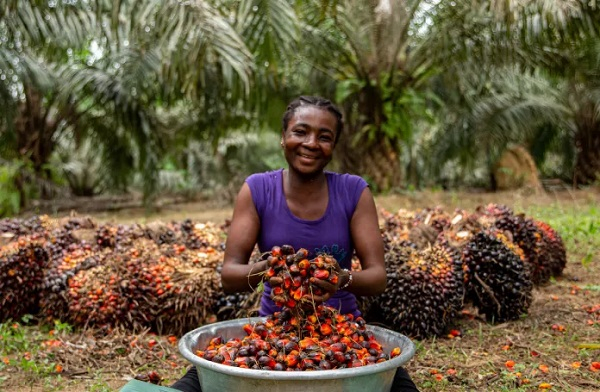Why Tomato Prices Skyrocket Every June: A seasonal phenomenon explained

Full Text
The role of agriculture in most developing countries is the backbone of many developing economies. The food and agriculture industry plays a major role in Ghana’s economy. The marketability and proper handling of agricultural produce can ensure agrarian productivity.
Ghana is known for its rich agricultural industry, with tomato farming being a major contributor to its economy. However, during the rainy season, Ghanaian tomato farmers face many challenges, like flooding, that significantly impact their yields and profits.
According to Easy Track Ghana, Ghana has two rainy seasons. The heaviest rain in the south occurs from April until June, and lighter rain is possible during September and October.
One of the main challenges Ghanaian tomato farmers face during the rainy season is the increased risk of disease and pest infestations. During this time of year, the wet and humid conditions create the perfect environment for diseases such as bacterial wilt and fungal infections to thrive. Additionally, pests such as aphids and white flies are more prevalent during the rainy season, posing a threat to the health and productivity of tomato plants.
Another challenge Ghanaian tomato farmers face during the rainy season is the risk of flooding.
Heavy rains can lead to waterlogged fields, drown tomato plants, and cause root rot. In extreme cases, flooding can destroy crops, leading to significant financial losses for farmers.
Why the continuous price hike?
The Ghanaian economy is gradually transitioning from an agricultural-led to a service—and industry-led-focused economy, which is making the contribution of the agricultural sector to national gross domestic product disproportionately low.
The price of a box (adaka) of tomatoes increased by more than 360% in less than six months: January 2024 – GH¢1,500, June 2024 GH¢6,000 to GH¢7,000.
The rise in tomato prices can be attributed to many factors, including a delayed monsoon, insufficient production, and high temperatures.
Ranked 10th among 20 items with the highest inflation rates, fresh tomatoes have seen a substantial increase compared to the national inflation rate of 25%.
Tomato prices caused quite a stir on social media just around the time the Ghana Statistical Service (GSS) revealed a staggering 46% inflation rate for the vegetable in its April Consumer Price Index report.
Although still high, the tomato inflation rate dipped slightly from March’s 56.9%, offering a glimmer of hope that the worst may soon be over. However, this spike in tomato prices has significant implications, given that tomatoes constitute 40% of total household vegetable expenditure in Ghana.
Before the GSS released its April figures, complaints flooded social media platforms like Twitter. Users from various regions lamented the exorbitant prices of tomatoes. Many shared photos depicting small quantities of tomatoes being sold at premium rates.
The surge in tomato prices has been attributed to a supply shortage, exacerbated by the off-season period. Ghana has had to import tomatoes from neighbouring Burkina Faso, which practices year-round tomato farming. Last August, farmers in Ziope in the Volta Region and other tomato-growing regions in Ghana were compelled to sell their produce at an 80% discount to avoid spoilage.
One of the challenges contributing to this supply-demand imbalance is the difficulty in preserving fresh tomatoes over extended periods. This leads to price fluctuations, with prices dropping significantly during harvest seasons and soaring during off-season periods.
Importance of tomatoes despite price hike
Tomatoes, as vegetables, play an important role in a healthy diet. They are also fruits rich in nutrients such as carotenoids, lycopene, beta-carotene, gamma-carotene, phytoene, and several minor carotenoids.
According to a nutritionist, Patience Naa Adjeley Adjei, tomatoes are a good source of vitamins and minerals, including vitamin C, potassium, folate, and vitamin K.
“These nutrients are important for overall health and well-being, despite how expensive they [tomatoes] may be.”
She added that tomatoes contain antioxidants such as lycopene, beta-carotene, and vitamin C, which help protect the body from damage caused by free radicals. These antioxidants have been linked to a reduced risk of chronic diseases such as heart disease and cancer.
“Tomatoes are expensive, but we need to buy them because they are low in calories and can be a great addition to a weight loss or weight management plan. They are also high in water content, which can help keep you hydrated and full.
Why do retail prices of tomatoes remain high despite drops in wholesale prices?
Retail prices of tomatoes are holding firm despite a significant drop in wholesale prices since the third quarter of 2023. This trend persists even as the rainy season complicates tomato cultivation, traditionally causing price increases.
The wholesale price for a box of tomatoes imported from Burkina Faso plummeted by 43%, from GH¢3,000 (USD 249.98) in Q2-2023 to GH¢1,700 (USD 141.99) in Q3-2023. Locally produced tomatoes saw a similar decrease of 47 per cent, from GH¢1,500 to GH¢800 (USD 124.99 – 66.66). However, these decreases have not translated into lower retail prices. As of January 2024, retail prices remain unchanged.
Consumers in Accra are frustrated, as the price of a small paint bucket of local tomatoes is still GH¢30 (USD 2.50), and the imported counterpart is GH¢60 (USD 5.00), the same rate as before the wholesale price drop.
It is reasonable to expect that price transmission for perishable products will display seasonal variation, especially in a low-income country. However, few studies have explicitly tested for seasonal variations in price transmission.
Climate requirements for growing open-field tomatoes
Tomato plants flourish under specific climatic conditions, including warm, sunny days and cool nights.
The dry climate prevents fungal diseases and ensures a healthy yield.
However, during the rainy season in Ghana, these ideal conditions are disrupted. Excessive moisture not only hampers growth but also increases the likelihood of diseases that can reduce overall yield.
An agricultural economist, Dr Irene Egyir, explained, “Tomatoes do not like rain. You must spend more time and resources to get tomatoes to grow in the rain. This necessity for increased effort and investment during the rainy season contributes to the higher prices seen in the market.”
Adaptation Strategies
The scarcity drives up prices, making tomatoes a more expensive commodity. This is exacerbated by the fact that the population in Ghana is growing, increasing the demand for this staple food item.
Dr Egyir recalled that the population was around 6 million during her childhood, which contrasts starkly with the current population of approximately 36 million, which increases the strain on supply chains.
“When I was growing up, those times I’m talking about, I think we were 6 million; today, we are maybe 36 million,” Dr Egyir notes, highlighting the pressure on supply chains.
In response to these challenges, many people in Ghana have turned to processed tomatoes as a substitute for fresh ones.
“We have changed from fresh to what we call processed tomatoes,” Dr Egyir says.
This shift helps mitigate the impact of seasonal scarcity. Processed tomatoes, such as tomato paste and canned tomatoes, are less affected by seasonal fluctuations and can be stored longer.
Dr Egyir further elaborates, “If the fresh supply is reduced, then, economically, it’s not so bad because the price is alright due to the unique demand for fresh tomatoes.” The availability of substitutes, like processed tomatoes, provides some relief to consumers and stabilises the market to some extent.
What are the Tomato vendors saying?
Saeed Jafar, a tomato retailer at the Tamale central market who also farms tomatoes, explained the retailers’ viewpoint.
He mentioned, “Blame the rains; despite the drop, we still consider the current wholesale prices of the commodity—both local and imported—to be exorbitant, which is why we have not reduced our retail prices.”
Although affecting customer patronage, this decision is deemed necessary for the retailers to sustain their business viability.
Saeed Jafar recognised the difficulties faced by tomato retailers, pointing out that some traders have diversified into other businesses due to decreasing profit margins.
He called on the government to address infrastructure issues, such as road conditions and drainage systems, to enhance market accessibility and prevent flooding during the rainy season.
Tuzoo, a farmer in Tono in the Upper East region, also attributed the escalating costs to persistent rainfall and deteriorating road infrastructure.
“The rains have been relentless,” Tuzoo remarked.
“The excessive moisture is detrimental to the crops, leading to lower yields and, consequently, higher prices.”
He elaborated that the continuous downpours have disrupted the growth cycles, causing a scarcity that drives up the cost of tomatoes.
Beyond the challenges posed by the weather, Tuzo highlighted the dire state of road infrastructure as a significant contributing factor to the high prices.
“Transporting tomatoes from the farms to the markets has become arduous,” he explained. “The poor condition of the roads means longer travel times and higher transportation costs, which inevitably get passed on to consumers.”
Tuzoo called on the government to address these pressing issues. “Improving the road conditions and implementing better drainage systems are crucial,” he urged.
“These measures will not only facilitate easier transport of goods but also prevent flooding, which can further devastate the crops.”
It is, therefore, vital for vendors to market their produce as quickly as possible since it is perishable. Delays in marketing and improper handling of produce might result in the vendor encountering heavy losses.
Source: ghana.dubawa.org





